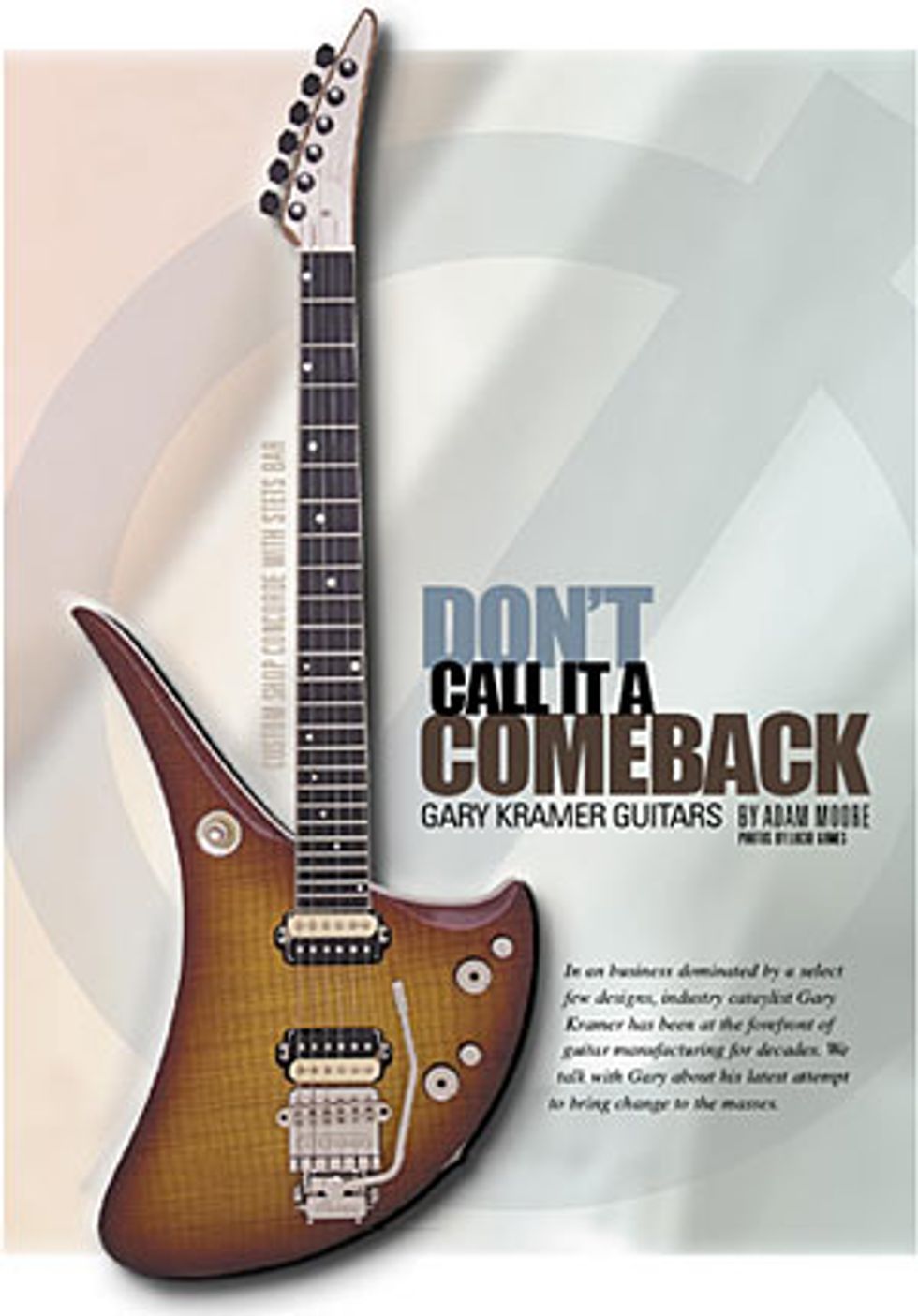 PHOTOS BY LUCIO GOMES |
|
Having escaped the guitar business for greener pastures these past decades, Gary Kramer is back and once again at the forefront of a new movement in guitar building. But this time it isn’t traditional materials he’s rallying against; it’s fundamental guitar design. With revolutionary visions like the Delta Wing, Gary isn’t simply asking guitarists to consider materials other than wood – he’s asking us to rethink what a guitar should be.
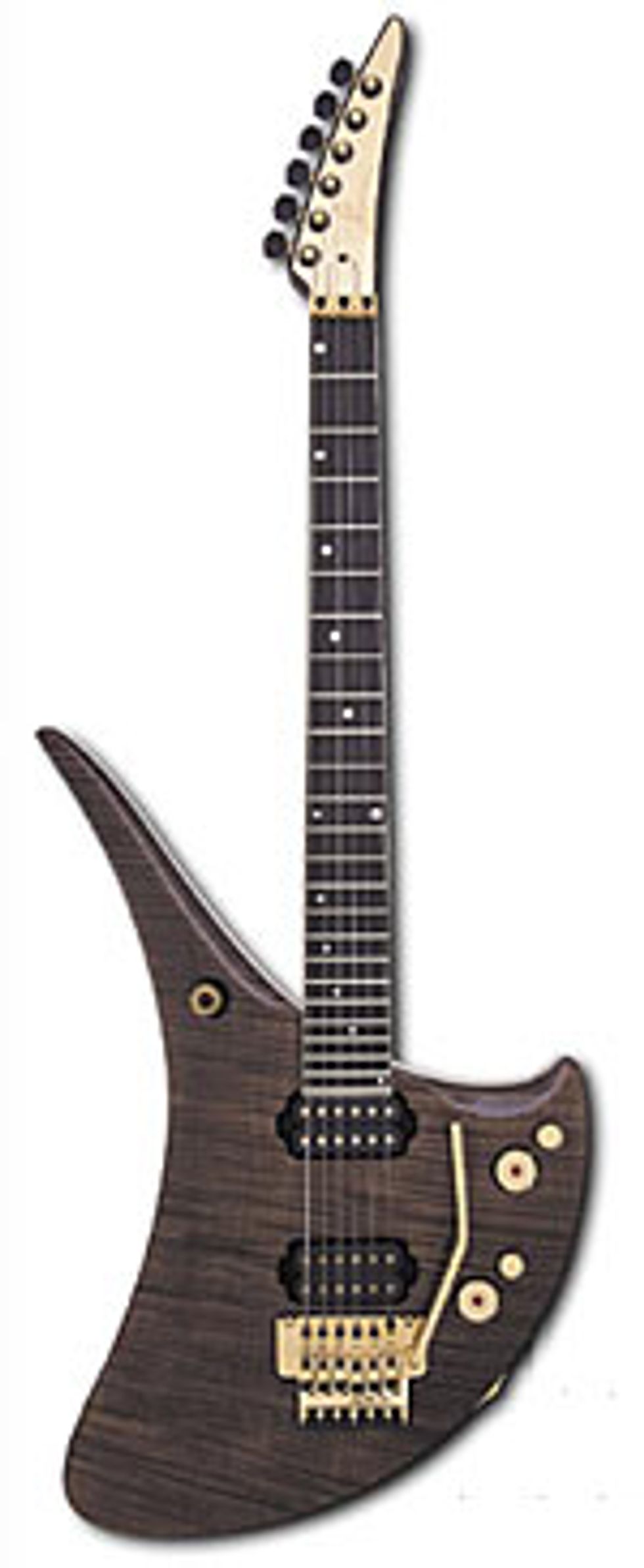 Your history really began with Travis Bean and setting up prototypes of the aluminum- necked guitar. What was it about that project that excited you enough to get involved?
Your history really began with Travis Bean and setting up prototypes of the aluminum- necked guitar. What was it about that project that excited you enough to get involved? Travis and I worked together in a car dealership in the early ‘70s. I used to watch Don Kirsherner’s rock concert on late-night TV back then, and unless the artist was really special or the group was somebody I enjoyed, I always focused more on the equipment. I have always been a gadget person, and I always wanted to be the first with the latest technology. On the show I remember seeing lots of Marshall stacks, Fender Strats, P-Basses, and, of course, Gibson Les Pauls. They were basically the only instruments and equipment I ever saw.
One day Travis came to work with this beautiful aluminum neck guitar that he made in his garage. I took one look at it and thought how great it would be to see this guitar on stage; what a difference it could make. It was at that point Travis and I partnered up and opened a small factory in Sun Valley, CA.
You’ve talked about the initial advertisement you placed in Guitar Player magazine for Travis Bean Guitars, and the response you received from readers when you made reprints of the ad available for a few dollars. What were you able to take away from that success, in terms of gauging consumer tastes?
I learned how important a creative ad could be in capturing the imagination of thousands of guitarists around the world, all wondering what this new aluminum neck guitar would look and sound like. From their response I knew that change was what they wanted.
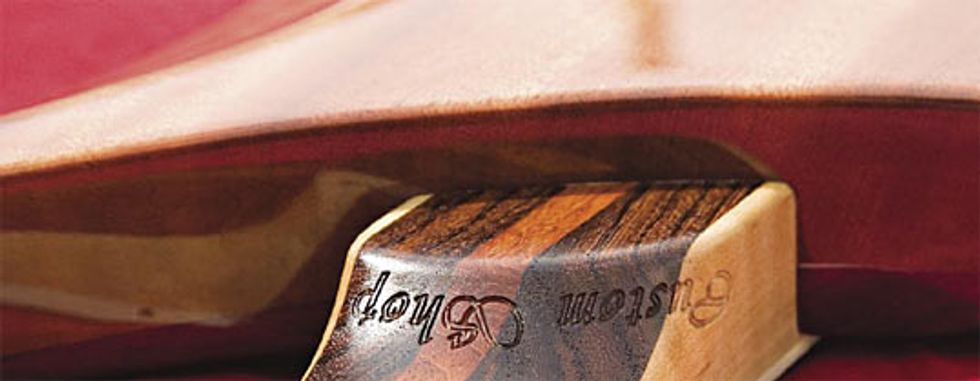
|
At this point in your history, you didn’t even play the guitar, yet you were tasked with finding dealers and otherwise showing off your products. What kind of difficulties did you run into, from both dealers and consumers, and the industry at large? Did people see you as an outsider?
Yes, at times it was frustrating to me because I couldn’t play; I could only verbalize, as opposed to demonstrating, the guitars. I don’t think they really saw me as an outsider though, because most of the time I was able to bring someone with me who played, and there was usually someone in the store who could play. At the time Travis made his first prototype guitar, he wasn’t a guitar player either. It was only later on that he learned to play. Also, something most people don’t know is Leo Fender didn’t play, so that kind of puts me in the same position.
How did your involvement with Travis come to an end? How smooth was your transition into Kramer Guitars? What was your mindset at the time?
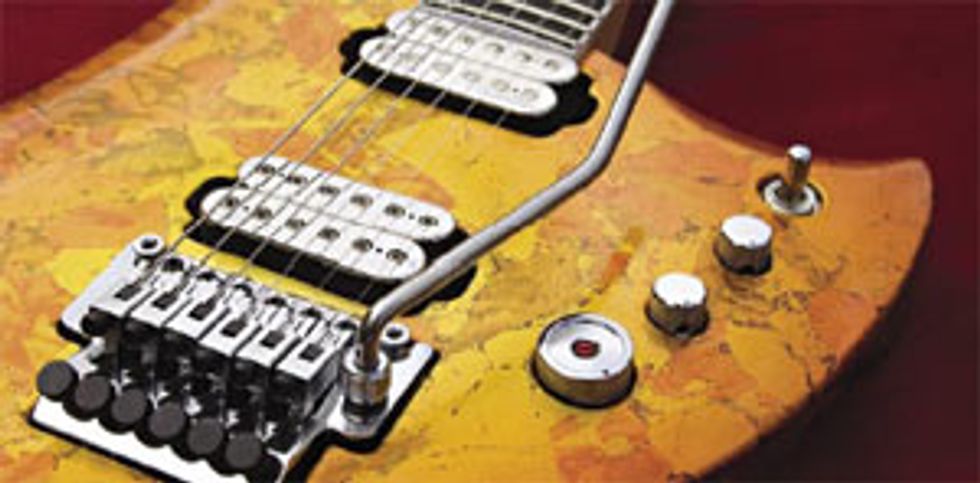 I think the end came when Travis paid more attention to his drumming than making guitars, of which we had hundreds of orders for. I was not a luthier and I didn’t have the responsibility of making the guitars. It was a frustrating situation; taking orders but not being able to fill them like I had promised.
I think the end came when Travis paid more attention to his drumming than making guitars, of which we had hundreds of orders for. I was not a luthier and I didn’t have the responsibility of making the guitars. It was a frustrating situation; taking orders but not being able to fill them like I had promised. To be honest, any breakup is ugly, but, fortunately for me, I already had started a good relationship with Dennis Berardi, part owner of Gracin’s In Town, who was our largest Travis Bean dealer, so my transition was a little easier. It was still hard on me, since I had to relocate to New Jersey and start all over again, and I was concerned with making additional advancements in electric guitars. My mindset was how I was going to go about it.
Kramer was an innovator in the threetier system of manufacturing – different lines built in America, Japan and Korea, for example – early on. Were you involved with that decision?
No, the thought never crossed our minds to make guitars in another country. I guess after I left, the decision to make more money for the company must have been the deciding factor, but that’s just a guess.
You’ve talked about how important American craftsmanship is for you, yet your current company follows the tiered system of manufacturing to a certain extent – producing models both in the US and overseas. How do you feel this system of manufacturing has affected the industry?
Well, it all depends. American guitars are like old American cars. There are certain things you can never change. In the minds of guitar players all over the world, they will always consider American-made guitars to be the best, just like old muscle cars. However, in this day and age, there is so much competition that you have to have an edge, and if you can find a manufacturing company overseas that can produce almost the same quality as your own factory, then you have a winner. Making guitars overseas – by cutting costs – allows more guitar players to purchase them.
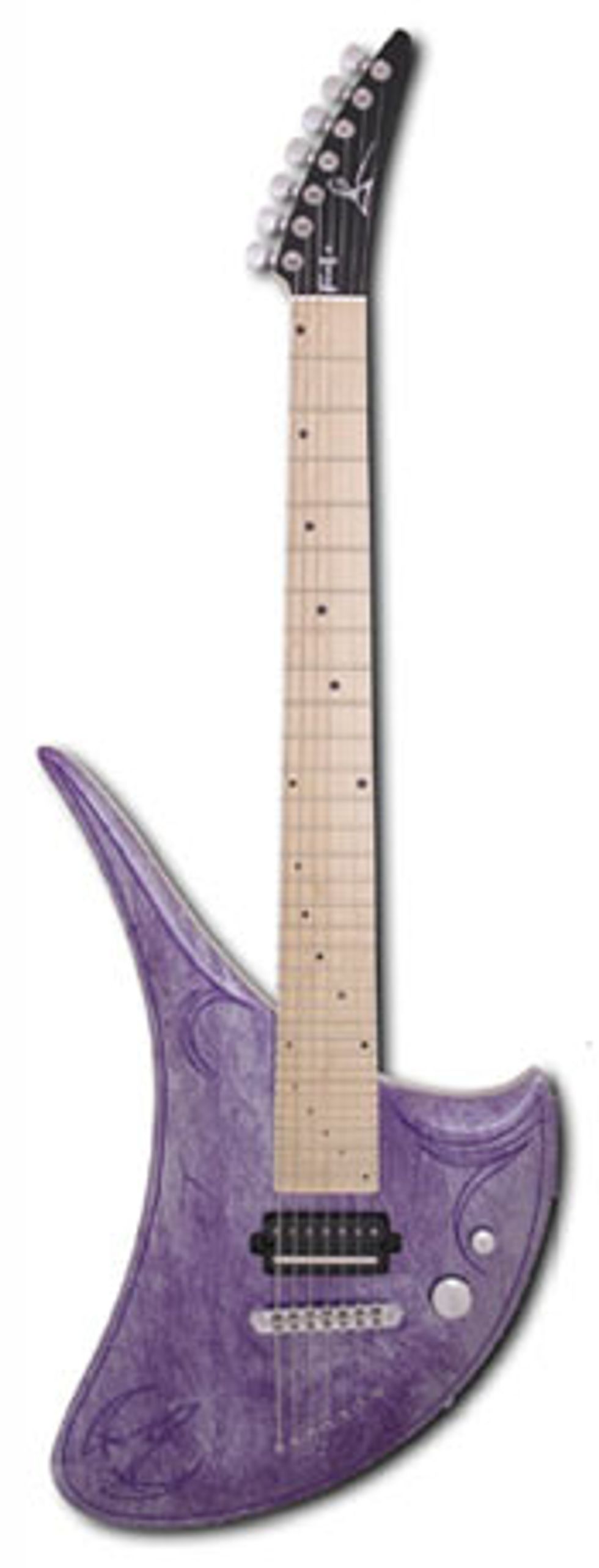 In terms of Kramer Guitars, you left the company early in its existence, on seemingly bad terms. As you watched the company develop over the years, do you feel that they stuck to the vision you helped pioneer?
In terms of Kramer Guitars, you left the company early in its existence, on seemingly bad terms. As you watched the company develop over the years, do you feel that they stuck to the vision you helped pioneer? Absolutely. Our vision then was quality first. Next, it was to bring to the guitar world a new line of guitars, with innovations in all aspects of the guitar, from electronics to strings and beyond. I think ultimately Kramer followed our original vision. When I left the company it wasn’t on bad terms. My new task at the time was to be the West Coast Artist Relations Manager, and it wasn’t until months later that our relationship began to crumble, due to compensation issues.
You headed back to California and ended up stepping out of the industry for quite some time. Why didn’t you make a greater effort to stay involved?
I got involved with the California real estate market quite heavily and I hardly had any time for myself, only glancing at guitar magazines occasionally. With one new venture after another, and none of them involving guitars, all of my time was spent.
During your lengthy sabbatical, what kinds of trends and changes did you see in the industry as an observer?
During that time, the market was changing; increasingly, companies were re-issuing instruments that were once groundbreaking. The bigger companies were taking over the smaller guitar companies, but their eye was only on profits, not on creativity. The enthusiasm that had powered the industry’s pioneers was losing focus. Therefore, the majority of the same concepts were being generated over and over again.
So what prompted your return to the industry?
In 2004 I was invited to attend the Kramer Convention, a place where Kramer guitar enthusiasts gather once a year and share music, stories and guitars. While I was there, I was asked if I would ever get back into the guitar making business again; the answer, of course, was an enthusiastic “no.”
As I walked around looking at old Kramer guitars a thought came to my mind that there hadn’t been a real change in guitars in 30 years. I thought, everything else changes – why not guitars? I wanted to make a real change again. I had more time on my hands now and I was able to spend some time creating what I thought would be a new look in guitars.
It is obvious that for the past decade or so, most guitar companies were competing at the price point for their instruments. Designs and concepts took the easy path of copying the already-copied, safe, traditional guitars. In some cases, only the slight difference in the headstock shape would visually separate different companies’ products. At the NAMM shows, the “new” models were the same thing as always, just with new color combinations.
While doing this, I was introduced to Leo Scala, the most creative luthier I have ever met. He showed me the new Delta Wing design, and at first glance I fell in love with it. I knew then that a design like this would be a hard sell in America, because here we’re so traditional – the American market has always been focused on traditional looking guitars. But it’s a different story in Europe and Asia. They are hungry for a new and innovative looking guitar; the majority of our sales right now are overseas. It seems to me that Europe and Asia have always been two or three steps ahead of America with modern technologies, fashion, cars, etc.
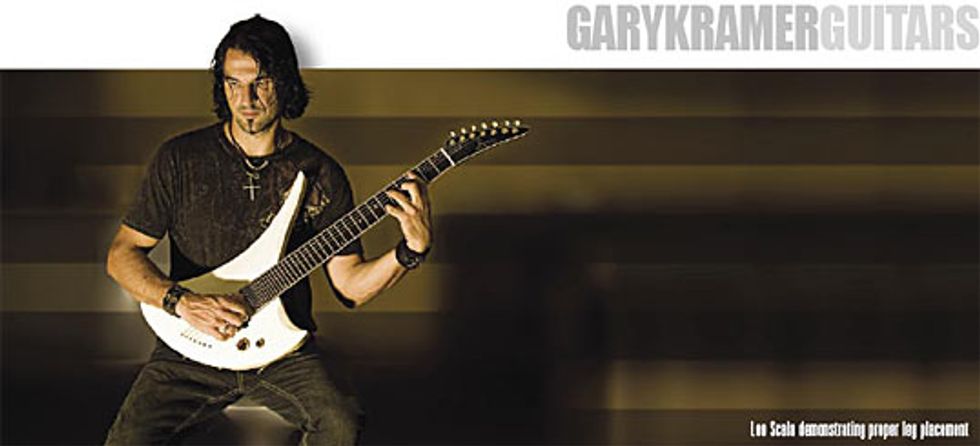
|
What has Leo brought to the operation? Do you work with him directly when it comes to design and conception?
Let me put it this way, without Leo and his young and innovative designs, we probably wouldn’t be making guitars today, and yes, I do work with him directly on every aspect of this company, from drawing board concepts, to colors and electronics. Leo and I make a good team.
How difficult is it to start up a new guitar company, especially one that emphasizes some rather unique designs?
I already started up two guitar companies in the past; a lot of the groundwork was behind me, and now, with all the sophisticated machines available, things have gotten easier and easier. I didn’t have to find a new building; I already had one. I didn’t have to go out and look for working capital; I had my own. I said to myself, “What could be easier than this?”
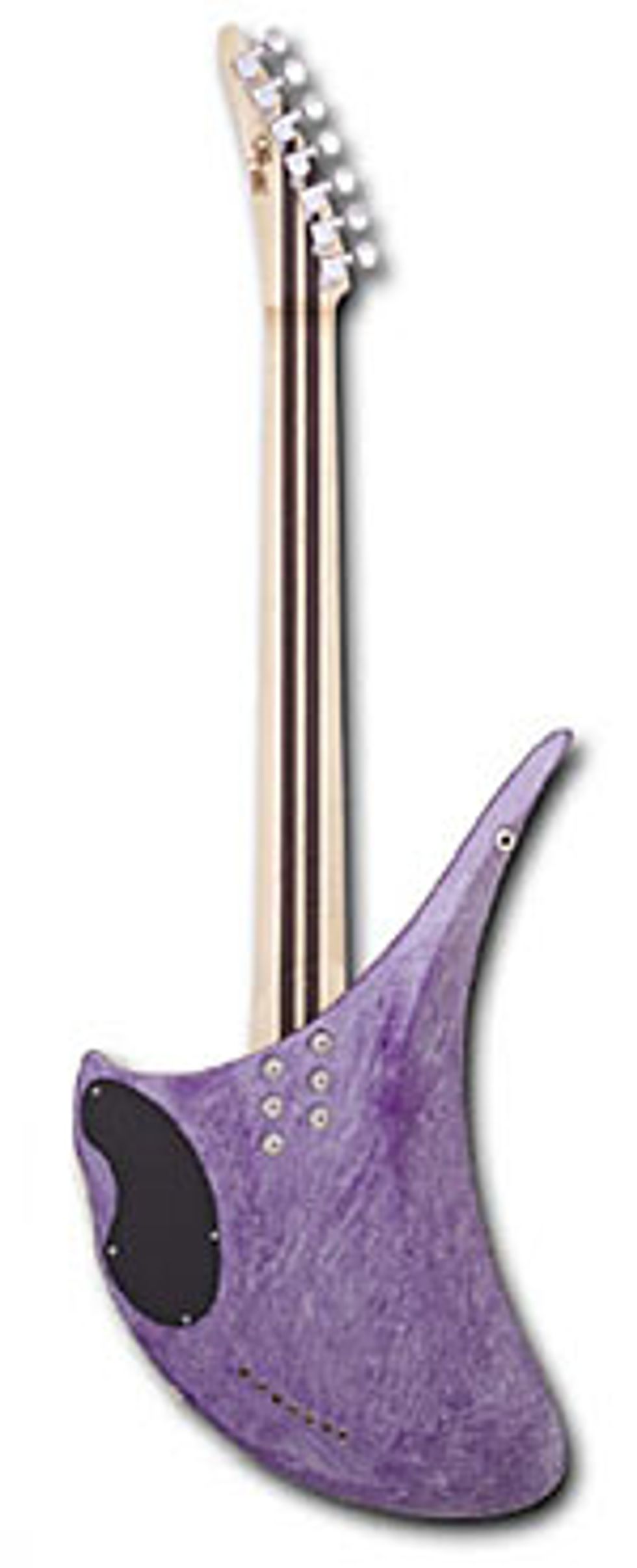 The Delta Wing definitely falls under the category of non-traditional design. What kind of resistance have you faced from the industry in bringing it to market? What kind of response have you gotten from guitar consumers, who are a notoriously traditional bunch?
The Delta Wing definitely falls under the category of non-traditional design. What kind of resistance have you faced from the industry in bringing it to market? What kind of response have you gotten from guitar consumers, who are a notoriously traditional bunch? Well, the iPhone falls under a category of non-traditional designs, and I’m sure that Apple gets its share of resistance; however, the iPhone is the future. The Delta Wing is new; the aesthetics are different, and just like anything new, it takes time to adjust.
I can remember when the Travis Bean aluminum neck came out, all I ever heard was resistance but I couldn’t let that bother me. I knew what I had then, and with the new Delta Wing series, I know what I have now.
Who is your intended audience for these guitars? Who do you envision playing a Gary Kramer?
The response I am receiving from guitar players who own a new Delta Wing is overwhelming. I don’t think they will ever put down their traditional looking guitars, just like I will never put aside my muscle cars; at least guitar players have an option and I know that once they pick up one of our new Delta Wings they won’t be disappointed.
The intended audience, or guitar player profile if you will, is a person who is looking for his or her own identity. The intended player will be someone who wants to create their own style. They don’t want to simply follow the norm; they are looking for a low-production, high-quality instrument. The Delta Wing concept has its own personality and it doesn’t fall into a particular category. It’s unique.
Who are some of the big names playing your guitars right now?
At this stage, the company is focused on the finishing touches on our new line of guitars. Our menu options will expand and we will offer new lines of instruments. After all of that is complete, we will decide which path to take and which artists to persue. Our current sales statistics show that we are catering to guitar virtuosos who have been waiting for a challenge.
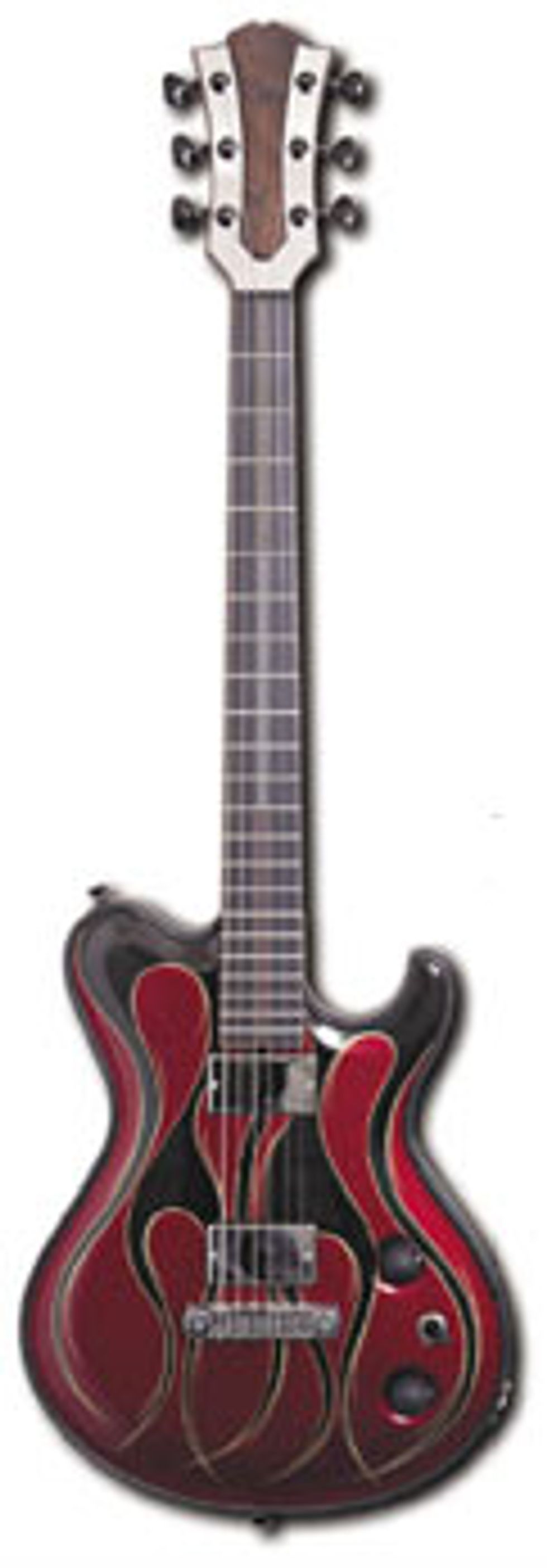 Your guitars have included multiple references to sports cars and jet planes dating all the way back to the release of the 450 G in 1975, named after the Mercedes 450 SL, and again with the Delta Wing and F-1. Additionally, your Bondage model features a leather wrap around the outside of the guitar, harkening to the steering wheel of an exotic car. Do you see your brand as a kind of sporty, high-end alternative to current designs?
Your guitars have included multiple references to sports cars and jet planes dating all the way back to the release of the 450 G in 1975, named after the Mercedes 450 SL, and again with the Delta Wing and F-1. Additionally, your Bondage model features a leather wrap around the outside of the guitar, harkening to the steering wheel of an exotic car. Do you see your brand as a kind of sporty, high-end alternative to current designs? Yes, in my head guitars and cars have always been inextricable. New cars are very exciting to me because they put out something different each year. Why shouldn’t a guitar follow in the same footsteps? I do see my new line of guitars as very sleek, sexy and one step ahead.
Can you tell us a bit about the Bondage and the Crusader models? What can we expect to see in those instruments? Where and how are they being assembled?
The Bondage guitar features a carved top with a concave back, a unique neck construction with a “dropped” fingerboard, and a complex headstock design with a recognizable tuning fork aluminum badge. For a completed look, we added custom pickups, custom knobs, lasercured control-cavity plate, engraved aluminum rear headstock badge, centered fingerboard stripe, and a side blend of the finest leather. On a very limited basis, Bondage guitars will be produced in the Los Angeles based Gary Kramer guitar design studio.
Crusaders have a different story to tell. They have that comfortable, worn-in feeling, bound Birdseye maple necks, direct-mounted pickups and top of the line hardware. The Crusader’s unique vibe was created by carefully blending aspects of vintage and modern designs, and will be offered as both a custom shop model and a more affordable import series.
Ergonomics, while a great office furniture buzzword, hasn’t really taken off in the guitar industry. What’s your plan to change that?
Again, there has to be a first for everything. The world is changing and ergonomics is something that should apply to anything the human body uses on a daily basis. A guitar player should not have to physically suffer and be in pain after ten years just because his guitar wasn’t designed with ergonomics in mind. There is a cool way of interacting with the instrument, and there is a comfortable way to interact with it – the choice is yours. We simply tried to fill the second option that had been left void.
The F-1 Delta Wing by Gary Kramer has 7 strings, 36 frets, one pickup and 5+ octaves. The neck is a 5-piece laminate of wenge and maple with jumbo frets from 1 to 24 and vintage-sized frets from 25 to 36. The neck profile is flat, which, according to Kramer, “provides thundering amounts of sustain.” You have to be targeting the shredders with this model – would you say that’s the focus?
The F-1 Delta Wing was designed with an extended sound range in mind. Its concept is focused on creating a low profile, fast playing instrument, offering more than any other production-type instrument available. Sure, this model attracts shredders, but players that are into alternative, experimental areas of music also find it desirable. People who are looking to expand their musical styles are also attracted to the instrument. The F-1 is so unique that people see it as a cutting-edge addition to their guitar collection.
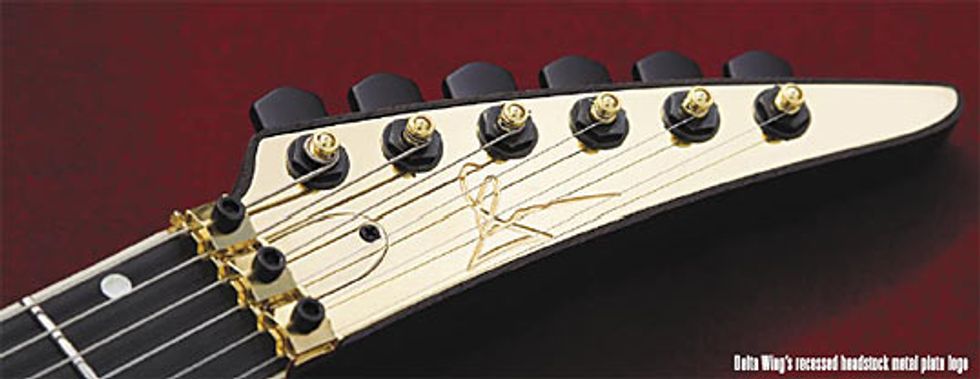
|
Your company’s history mentions that as Kramer Guitars got off the ground in the early ‘70s, you wanted “to become the biggest guitar company in the country.” Yet, these new guitars seem to have a much more defined segment of buyers, both in design and price point, suggesting a more boutique, custom focus. Has your business vision changed throughout the years?
I don’t want to be the biggest guitar company in the world, and the Delta Wing design is only one of the many new guitars we are making. The Delta will find its own market, and the Bondage will find its own market, slowly. I really have no expectation for them to do so rapidly, although I was very surprised to see how quickly they have been accepted in Europe and Asia.
Our goal is to supply the younger demographic of guitarists with the new Delta Wing design. When we release the new Crusader, which has more of a Strat vibe, our focus will then be on the traditionalist.
If you could go back and do it all over again, what would change?
Other than the location of the original Kramer factory, nothing.
» Click here to see a gallery of Gary Kramer''s work, past and present.
Gary Kramer Guitars
garykramerguitars.com






![Rig Rundown: Russian Circles’ Mike Sullivan [2025]](https://www.premierguitar.com/media-library/youtube.jpg?id=62303631&width=1245&height=700&quality=70&coordinates=0%2C0%2C0%2C0)

























